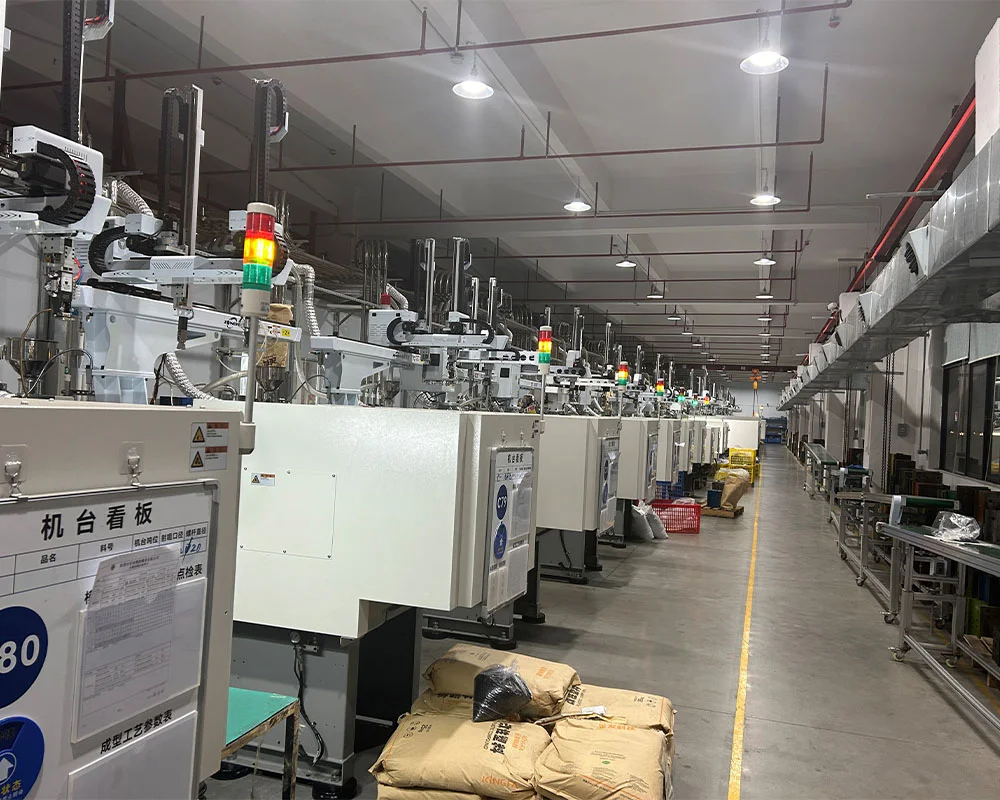Introduction to Reducing Injection Molding Costs
Plastic injection molding is a widely used manufacturing process that can be costly if not managed properly. By employing strategic measures, businesses can effectively reduce the plastic injection molding cost without compromising on quality. Understanding the factors that contribute to the cost of plastic injection molding is crucial for implementing cost-saving techniques. This article explores various strategies to optimize design, materials, and tooling to achieve significant cost reductions in plastic injection molding services.
Optimizing Part Design to Save Costs
Eliminate Unnecessary Features and Undercuts
Part design optimization is among the major cost-reducing methods in plastic injection molding. Reducing undercuts and unnecessary features can simplify the mold design, saving time and money to produce. Undercuts require additional tooling and advanced mold motion, which make parts more costly. By reducing the complexity of parts, manufacturers can simplify the production process and lower its cost.

Use a Core Cavity Strategy
Application of core cavity strategy to part design is also economical to the extent of being considerable. It is a designing strategy where two halves of a mold are drawn that add shape to the exterior surface of the part. There is cost reduction on material consumed and cycle times through strategizing prioritization, ending up with the goal of lowering the cost of plastic injection molding.
Design Self-Mating Parts for Simplification
Self-mating part design is simple to assemble and requires no fasteners or additional parts. Complexity reduction reduces not just production time but also waste of materials, thus lowering the cost. Simple production processes, self-mating parts are easy to manufacture and assemble.
Bear Part Size and Complexity in Mind When Designing
Part size and part complexity are the key drivers for plastic injection mold cost. Increased complexity or increased part size require more material and longer cycle times, which are contributing factors in terms of manufacturing cost. Through careful consideration of these factors during the period that the part remains in design state, manufacturers have the ability to make sensible choices that are cost-effective and functional.
Material and Tooling Strategies
Select Cost-Effective Materials without Sacrificing
Material choice is equally essential in minimizing plastic injection molding costs. Maintaining the right low-cost material choice without losing quality is of utmost importance to avoid extra costs. Various materials are to be weighed by companies according to the type of those materials, ease of availability, and cost so that an equal price-performance trade-off can be achieved.
Minimize Tooling Complexity for Easier Production
More sophisticated tooling designs cost more because they take time to make and involve higher maintenance. Moving parts and complicated features are eliminated in simplifying the tooling designs, and this greatly reduces the costs of production. Complexity reduction can help save the time of producers and plastic injection molding costs.
Adapt and Repurpose Molds to Save Money
Reuse or modify existing molds to produce new production is a perfect way of evading tooling costs. Instead of constructing new molds from scratch, companies are capable of reworking old molds according to new specifications or designs. Not only is this cheap to begin with, but lead time is reduced, allowing far more streamlined production processes.
Use Multi-Cavity or Family Molds for efficiency
Multi-cavity molds can produce more than one part simultaneously in one stroke, and this increases productivity and reduces part costs per unit. Family molds allow molding different parts of the same or almost the same size or shape simultaneously, increasing material and cycle time efficiency. Such types of molds improve the production process efficiency by reducing plastic injection molding overall costs.
By using these pro tips at various stages of the plastic injection molding process—from part design optimization to strategic material selection—companies can guarantee substantial cost reductions in production while providing high volumes required by seasoned plastic injection molding services providers.
Efficient Manufacturing Process Streamlining

Strategically Raise Production Quantity
Higher production volume is one of the effective methods for reducing plastic injection molding’s cost. Economy of scale, the reduction of the unit cost, can be savored by the producers at high levels of manufacturing. Nonetheless, production has to be offset with demand within the market to avoid creating an overproduction as well as inventories holding cost. It’s best done with careful planning manufacturing and in synergy with consumer orders to strike a thin line in between demand as well as supply.
Reduce Cosmetic Finishes and Secondary Operations
Secondary operations and cosmetic finishes can potentially add a lot to the cost of plastic injection molding processes. While such finishes can potentially make a product more aesthetically pleasing, they tend to require more labor and processing time. In order to save money, manufacturers must question whether or not such finishes are truly necessary to the utility or marketability of a product. For the most part, stopping or eliminating these processes would lead to substantial cost savings while not affecting overall product quality and functionality.
Utilize Design for Manufacturability (DFM) Analysis
Design for Manufacturability (DFM) analysis is one of the chief cost-reducing strategies in plastic injection molding. Through implementing good DFM analysis during designing, businesses will be able to identify areas within the production process that are apt to increase the costs. This is done by analyzing design aspects like part geometry, draft angle, and wall thickness to determine whether they are optimized for cost-effective production. Implementation of DFM principles reduces production complexity, minimizes scrap, and eliminates costly future design changes.
Opt for Low-Volume Production Where Necessary
Low-volume manufacturing is in some instances cheaper to produce than mass production. It is ideal for products with limited markets or require continuous design alterations. Low-volume manufacturing allows companies to respond to the needs of the market timely without spending a lot in large productions. It reduces the risk of surplus and achieves faster turnaround times, thereby being a suitable option for businesses that prefer maintaining costs at reasonable levels.
Strategically Use Overmolding Processes
Overmolding is one of the processes of molding multiple materials into a single item either more functional or more aesthetic. Utilized properly, overmolding can have the ability to speed up assembly time and make a product more durable, and thus lower the cost of making it overall. Overmolding must be balanced on the merits of the benefits in the respective applications by the manufacturers and as a substitute to traditional assembly techniques only if it is obviously better from a product performance and cost perspective.
Practical Implementation Guidelines
Assess Trade-Offs in the Design and Production Processes
In the course of trying to reduce the cost of plastic injection molding, sacrifices are made in a variety of design choices and processes of manufacturing. Some of the choices that are made with regard to a very clear vision on how cost is going to be impacted include selection of material, mold complexity, and part features. By sacrificing in a reasonable manner, the manufacturer is in a position to make rational decisions within budget yet provide products with an acceptable level of quality.
Involve Manufacturers in the Early Designing to Acquire Good Outcomes
Involving manufacturers in the design process early can help acquire economical outcomes in works of plastic injection molding. Bringing manufacturers on board earlier assists designers in gaining perceptions about manufacturability problems and likely cost-reducing processes. This is possible to determine potential problems likely to lead to complications in manufacture and eliminate them, thus achieving simple procedures and costs.
Test and Iterate Designs Efficiently to Optimize Costs
Efficient testing and iterating designs is the key to maintaining low costs in plastic injection molding services. Methods of rapid prototyping such as 3D printing enable designers to test a number of iterations of a component within a brief period without committing resources to mass production. With iterative cycles of testing, manufacturers can improve designs without incurring much on trial-and-error processes by identifying defects or inefficiencies at an earlier point.
Silkbridge’s Tailor-Made Solutions for Cost-Effective Efficient Molding
Silkbridge, founded in 2014, combines British ingenuity with Chinese production efficiency. Silkbridge is a low-cost plastic injection molding, PCB production, and electronic product manufacturing specialist, utilizing the latest technology to ensure high precision and zero waste. With experience gained from a range of industries from electronics and automobiles to medical devices, Silkbridge offers customer-specific solutions according to their needs. Its focus on quality inspection through AOI and X-ray inspection, among others, leads to uniform high-quality products that are able to keep up with the evolving demands of the global market.
Don’t hesitate to reach Silkbridge at contact@silkbridgeltd.com. Or our whatsapp link https://wa.me/8618122838771 with your questions or guidance regarding your plastic injection molding products design and production project – we exist to assist you in bringing your electronic concepts into reality!


